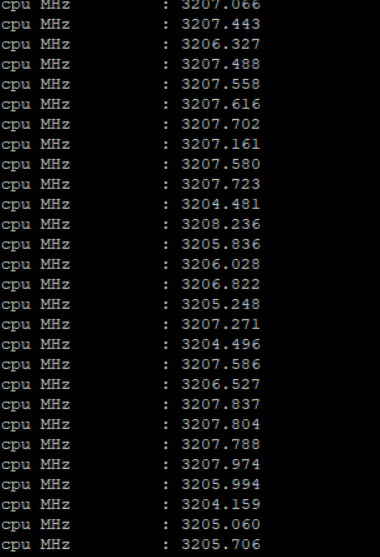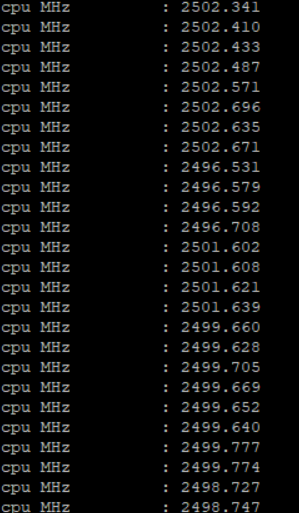AMD Rome Second Generation EPYC Review: 2x 64-core Benchmarked
by Johan De Gelas on August 7, 2019 7:00 PM ESTMulti-core SPEC CPU2006
For the record, we do not believe that the SPEC CPU "Rate" metric has much value for estimating server CPU performance. Most applications do not run lots of completely separate processes in parallel; there is at least some interaction between the threads. But since the benchmark below caused so much discussion, we wanted to satisfy the curiosity of our readers.
| 2P SPEC CPU2006 Estimates | ||||||
| Subtest | Xeon 8176 |
EPYC 7601 |
EPYC 7742 |
EPYC 7742 |
Zen2 vs Zen1 |
EPYC 7742 Vs Xeon |
| Cores | 56C | 64C | 128C | |||
| Frequency | 2.8 G | 2.7G | 2.5-3.2G | 2.5-3.2G | ||
| GCC | 7.4 | 7.4 | 7.4 | 8.3 | 7.4 | 7.4 |
| 400.perlbench | 1980 | 2020 | 4680 | 4820 | +132% | +136% |
| 401.bzip2 | 1120 | 1280 | 3220 | 3250 | +152% | +188% |
| 403.gcc | 1300 | 1400 | 3540 | 3540 | +153% | +172% |
| 429.mcf | 927 | 837 | 1540 | 1540 | +84% | +66% |
| 445.gobmk | 1500 | 1780 | 4160 | 4170 | +134% | +177% |
| 456.hmmer | 1580 | 1700 | 3320 | 6480 | +95% | +110% |
| 458.sjeng | 1570 | 1820 | 3860 | 3900 | +112% | +146% |
| 462.libquantum | 870 | 1060 | 1180 | 1180 | +11% | +36% |
| 464.h264ref | 2670 | 2680 | 6400 | 6400 | +139% | +140% |
| 471.omnetpp | 756 | 705 (*) | 1520 | 1510 | +116% | +101% |
| 473.astar | 976 | 1080 | 1550 | 1550 | +44% | +59% |
| 483.xalancbmk | 1310 | 1240 | 2870 | 2870 | +131% | +119% |
We repeat: the SPECint rate test is likely unrealistic. If you start up 112 to 256 instances, you create a massive bandwidth bottleneck, no synchronization is going on and there is a consistent CPU load of 100%, all of which is very unrealistic in most integer applications.
The SPECint rate estimate results emphasizes all the strengths of the new EPYC CPU: more cores, much higher bandwidth. And at the time it ignores one of smaller disadvantages: higher intercore latency. So this is really the ideal case for the EPYC processors.
Nevertheless, even if we take into account that AMD has an 45% memory bandwidth advantage and that Intel latest chip (8280) offers about 7 to 8% better performance, this is amazing. The SPECint rate numbers of the EPYC 7742 are - on average - simply twice as high as those of the best available socketed Intel Xeons.
Interestingly, we saw that most rate benchmarks ran at P1 clock or the highest p-state minus one. For example, this is what we saw when running libquantum:
While some benchmarks like h264ref were running at lower clocks.
The current server does not allow us to do accurate power measuring but if the AMD EPYC 7742 can stay within the 225W TDP while running integer workloads at all cores at 3.2 GHz, that would be pretty amazing. Long story short: the new EPYC 7742 seems to be able to sustain higher clocks than comparable Intel models while running integer workloads on all cores.












180 Comments
View All Comments
ET - Thursday, August 8, 2019 - link
I found the EPYC 7262 the most interesting SKU. By L3 cache size, that would be 4 chiplets, each offering only 2 cores. From the specs it looks like AMD has no shortage of 4 core chiplets, but I didn't expect 2 core chiplets.Rudde - Friday, August 9, 2019 - link
L3 cache is shared inside a CCX (4 cores), which suggests that every CCX has only one core available, but 16MB of L3 cache. I.e. every core has private L3 cache.colonelclaw - Thursday, August 8, 2019 - link
But can it serve Crysis Battle Royale?shing3232 - Thursday, August 8, 2019 - link
I am pretty sure it can lolBigMamaInHouse - Thursday, August 8, 2019 - link
@ Johan De Gelas will u test @240W TDP config?JohanAnandtech - Thursday, August 8, 2019 - link
Elaborate your interest in that, as it is only tad higher than the official 225W TDP?BigMamaInHouse - Thursday, August 8, 2019 - link
AMD is offering 225W/240W TDP option in bios to it's customers and lets them to decide if to go with better cooling and use 240W or stay at 225W, even though it looks small increase- in reality it should offer almost 10% more power headroom to the CPU chiplets -if you consider that the 225W is including ~55W for I/O die, so extra 15W for the chiplets alone should offer nice bump in clocks.Gondalf - Thursday, August 8, 2019 - link
Strange.....the article forgot Cooper Lake, out in Q4 this year and at major customers (for revenue) from at least two quarters. Same applies to Ice Lake SP that is in evaluation to OEMs right now.From the article looks like Intel is sleeping, but it is not at all. Ummm maybe Intel is snobbing some guys here not giving samples to test?? or informations to share??
Bet Intel have to argue about the test suite or about compiler settings.........
JohanAnandtech - Thursday, August 8, 2019 - link
Because Cooper Lake is still "warmed up Skylake" (unless I missed something). AFAIK it is Cascade Lake with 8 mem channels - so the 56-core socketed will probably be still in the 350-400W TDP range. So the SPEC benchmarks will look better, but getting that kind of server running inside your datacenter does not look very attractive: complex and thus expensive boards, high cooling and power distribution required. Looks like a chip that wins back benchmarks, but is too much hassle to roll out in high quantities.Null666666 - Friday, August 9, 2019 - link
Wondering when 4-8 socket ice lake is due.